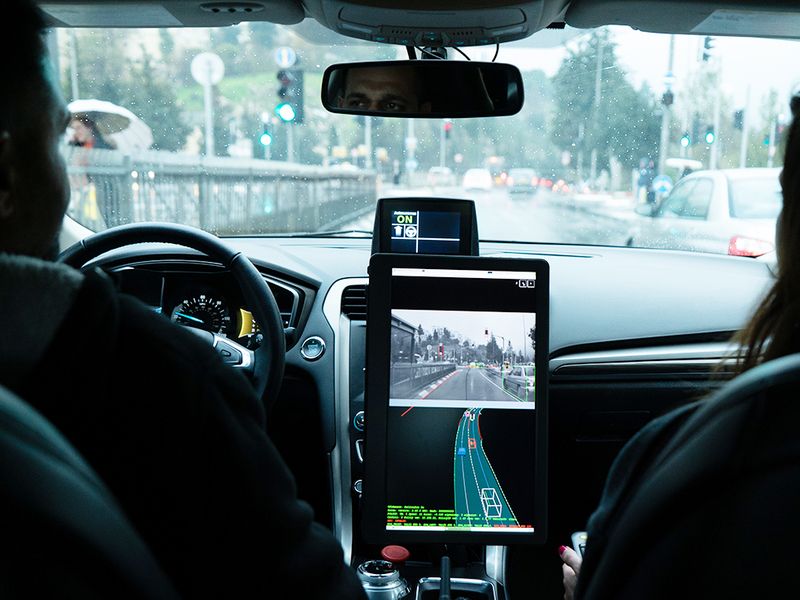
Mobileye’s self-driving ambitions are going global, and the company’s scope is stretching beyond robotaxis.
In 2021, the Intel subsidiary intends to launch new test beds in Tokyo, Shanghai, Paris and potentially New York. Those locations come on top of the company’s existing on-road efforts in Tel Aviv, Munich and Detroit.
By spooling up operations in multiple countries, Mobileye wants to showcase its ability to scale quickly in a fledgling industry where competitors often have concentrated on one particular city in early efforts to establish commercial footholds.
It’s the first step of a business strategy that starts with a robotaxi network scheduled to open in Tel Aviv in 2022, and extends into producing self-driving systems that could be ready for vehicles purchased by everyday vehicle owners as early as 2025.
Mobileye may be the first company to put a firm timeline on such an endeavor. Developing autonomous-driving systems for use by consumers is a project that Waymo has explored with Fiat Chrysler Automobiles, but that remains a “longer-term opportunity,” according to a spokesperson, with no certain time frame.
But Mobileye CEO Amnon Shashua says the company’s in-house efforts to develop high-definition maps and, more recently, radar software and a new lidar system-on-chip, will unlock the ability to safely scale Level 4 autonomous driving beyond ride-hailing networks that operate in geographically confined areas in four years.
“Scalability is very, very important for robotaxis, but more critical is what comes after the robotaxi,” he told Automotive News. “That’s the consumer. … If you want to build that business, you’re thinking not only of now, but three or four years from now, where this business is going to go, and having high-resolution maps is a crucial skill.”
Building high-definition maps and tailoring the behavior of self-driving systems to specific locations and driving cultures can be an arduous process. Mobileye believes it has something of a secret weapon that helps it rapidly acclimate to new roads: crowd-sourced maps.
Mobileye collects nearly 5 million miles of driving data every day from everyday vehicles on the road that contain its cameras and software in existing driver-assist systems. The company has culled information from millions of cars for mapping purposes since 2015.
Unlike others that build these maps primarily with lidar sensors, Mobileye has cobbled them together with approximately only 10 kilobytes of camera information per kilometer — which keeps the cost of transmitting such data low. Within recent months, Shashua said the company had collected enough data to make it “actionable” beyond specific neighborhoods.
When Mobileye began driving in Munich in July 2019, it was within a matter of days that the company had collected adequate information to enable autonomous driving.
“We can build maps of the entire globe, and this is where we are going,” Shashua said. “The issue of scale, maybe, is not that critical right now. You do a robotaxi in maybe Phoenix or San Francisco, and update that map when things change. … But if you want to drive everywhere, we need the high resolution to be at scale, and you can sell this kind of function.”
Selling self-driving systems in vehicles intended for personal use by consumers adds a third prong to an auto-tech strategy that may be the broadest in the industry. The company already ranks among leaders in providing camera-based technology that runs advanced driver-assist systems, and it intends to launch commercial robotaxi operations next year, first in Tel Aviv.
The self-driving vehicles used in the robotaxi fleets will utilize lidar sensors provided by Luminar. But for self-driving systems used in personally owned vehicles in 2025, Mobileye has developed its own lidar system-on-chip that relies upon parent company Intel’s expertise.
Building its own lidar chips can help Mobileye tamp down the costs for self-driving technology used in personally owned vehicles, which must be far more price-sensitive than robotaxis, Shashua said.
In robotaxi operations, fleets can recoup the higher cost of sensors because cost is less of a concern with consumers and higher vehicle expenses are offset by the lack of a hired human driver. But in personally owned vehicles, price matters. So does unlocking a wider geographical range of operation.
Mobileye believes it found a way to lower the cost while expanding that operational domain.
“Being able to put those passive and active laser elements on a chip that is cost conscious is very tricky,” Shashua said. “The fact we can put it on a chip makes the cost relatively reasonable. If we didn’t have this technology to put it on a chip, the cost would basically kill it.”